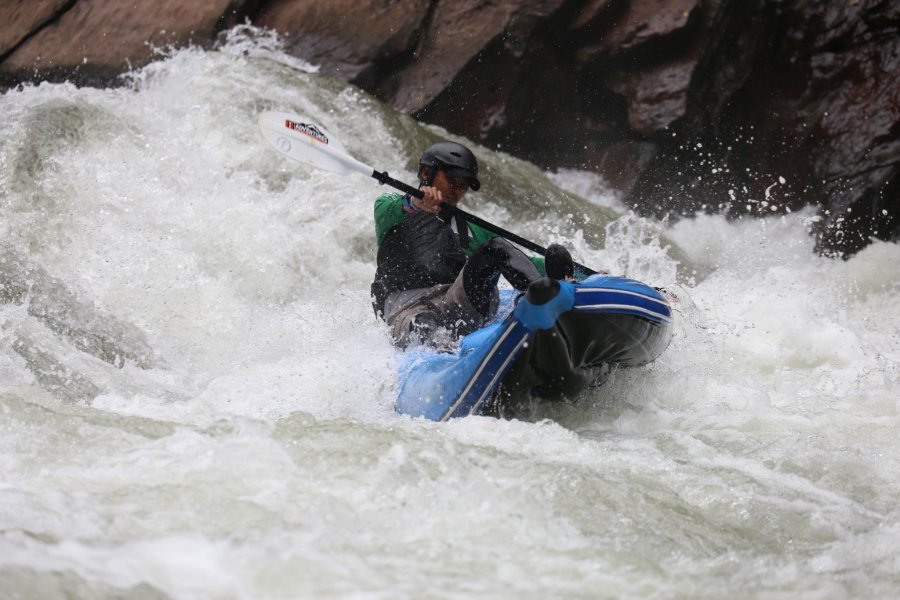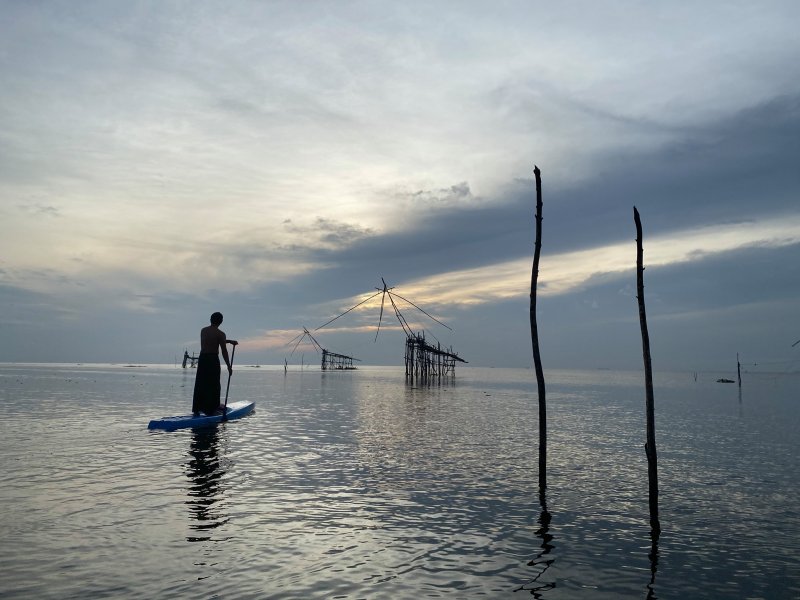During the 2011 floods,
Rattasapa ‘Kiad’ Mahachon was part of the volunteer group distributing life-saving aid via kayak. That piqued his curiosity into Thailand’s waterways. In 2020, Kiad took up paddling in earnest, journaling his trips on the water on his Facebook page
Pa Pi Pie, which roughly translates to “let’s go paddling,” and hosting trips for kayaking enthusiasts. We talked to him about his passion for paddling and the almost forgotten past of Thailand’s canals.
Why did you start Pa Pi Pie?
I’ve been passionate about paddling since I was 20, but I never took it seriously until the year of flooding in Bangkok. In 2011, my friends and I joined a rescue team to deliver food supplies. As the water was too high for anyone to drive, we had to paddle through the city in order to reach people affected by the floods. “Who would have imagined you could do this in Bangkok?” That’s what I thought at the time.
Since then I always seek opportunities to spend my time on my paddleboard.The more I’m on these canals, the more things that used to escape my notice have become clearer to me. There are so many unique communities around them, and their lives revolve around the water.
What do you normally notice when you’re on these trips?
It offers a perspective you don’t normally experience when you travel by car. Sure, when you look from afar at large temples near the river, you can get a glimpse of their beauty. But when you paddle through the canals, you notice something different. Water pollution, for example, is not something new, but when you are actually one inch away from it, it’s very apparent. Some routes also have their own stories, too, which may date back to even before the reign of Rama I. It’s fascinating to experience our history and culture by just passing through these communities. It lets you see transitions from water-based communities to our new urban lives.
Why do you think we disregard canal transportation these days?
It’s simply because we have changed our primary modes of transportation. Back in the day, we used to have a saying that Bangkok was the “Venice of the East” as people mainly commuted by boat and did most of their trade on the water. Our lives may have changed, but I don’t think canals are any less relevant in today’s society. Canals and rivers run virtually everywhere. If we could make use of what we have, we would all stand to gain. Waterway projects, when they get adequate support from the government, could be used for both recreational and tourism purposes.
What should Bangkok be doing to raise the awareness of water pollution and conservation?
We’ve lost our ties to water culture. We should find a way to reconnect us to them. There have been several attempts to restore and clean the canals in Bangkok, but the projects usually see low participation. I remember how people reacted when they learned I went paddling on Khlong Saen Saeb. They look bewildered and confused why I decided to do it. But someone needs to show them that people can actually paddle in these canals.
Do you feel the government is stepping up?
The government has been paying more attention to the canals lately. But I think they can do more, like launch a pilot study that goes beyond just the physical beauty of these canals, invest more effort in attracting young people, and promote participatory events. When we talk about canals, people have this picture of floating markets. I don’t think we can relocate all physical markets to the water, but if we could create something on that scale, surely it would attract more crowds.
Do you have any suggestions for those who want to start paddling like you?
Paddling, in a sense, can be safer than riding a bicycle on the road. You don’t have to worry about cars or bumpy surfaces like you do when you’re on land. But I do suggest that you should find an instructor to show you the ropes. Easy places to start are Tha Chin and Nakhon Chaisri rivers, since they hardly have motorboats traveling on them.
All images courtesy of Pa Pi Pie




